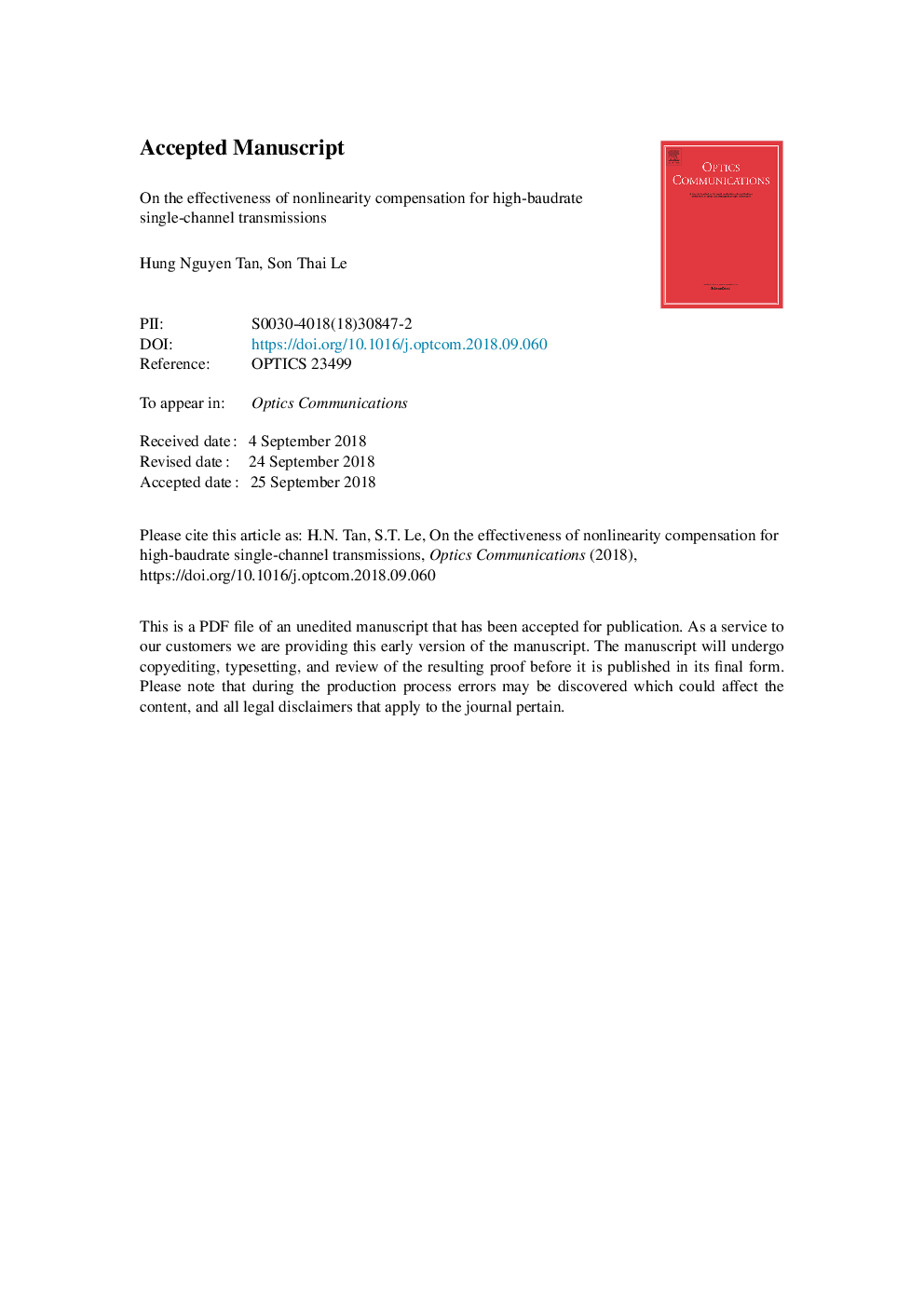| Article ID | Journal | Published Year | Pages | File Type |
|---|---|---|---|---|
| 11007774 | Optics Communications | 2019 | 30 Pages |
Abstract
Increasing the symbol rate (or baudrate) has been considered inevitable for increasing the interface rate as well as reducing the cost per bit of the next generation fiber optical transponders. For future high-speed transmission systems, fiber nonlinearity compensation (NLC) is a promising technique to increase the reach. However, NLC techniques only provide their best performance under ideal operating conditions which are difficult to meet in practice. In this paper, we investigate the effectiveness of NLC for high-baudrate single-channel transmissions under practical link conditions. In particular, we show that the performance improvement of the three commonly-used NLC techniques, namely digital back propagation (DBP), optical phase conjugation (OPC) and phase conjugated twin-wave (PCTW) subjected to link's amplification scheme and DSP implementation conditions, is significantly reduced when the bandwidth is increased due to the decreased efficiency in compensating weakly phase matched signal-signal nonlinear interaction components. This phenomenon imposes a significant challenge for preserving the benefit of nonlinearity compensation in high baudrate fiber optical transmissions. Importantly, we show that the effectiveness of NLC can be considerably improved by either modifying the amplification scheme for OPC and PCTW or increasing the DSP power for DBP.
Related Topics
Physical Sciences and Engineering
Materials Science
Electronic, Optical and Magnetic Materials
Authors
Hung Nguyen Tan, Son Thai Le,
